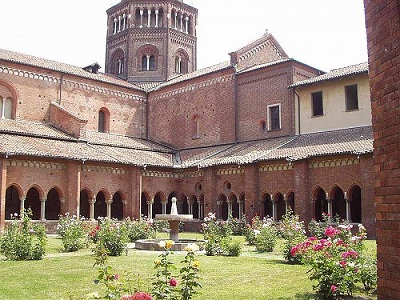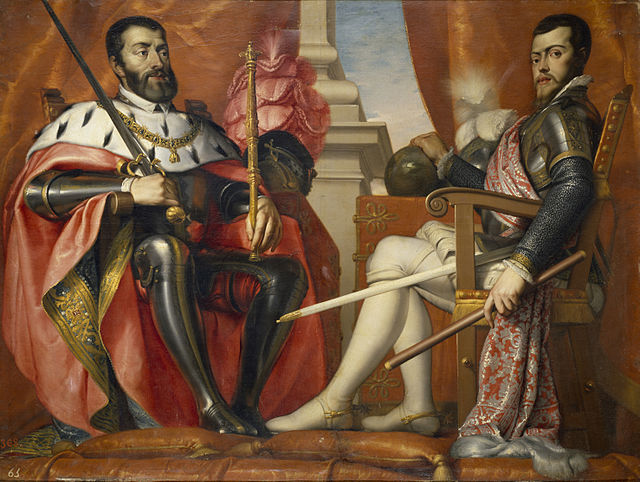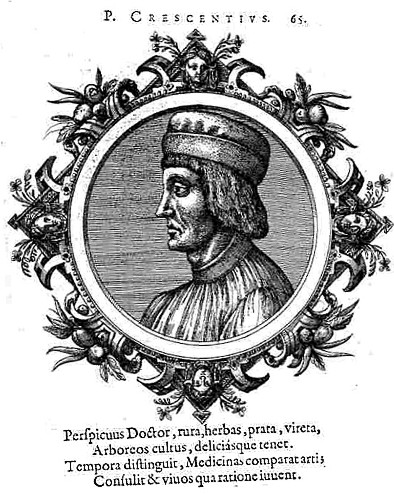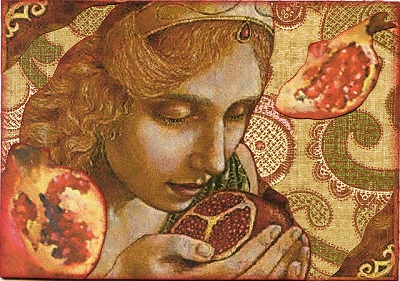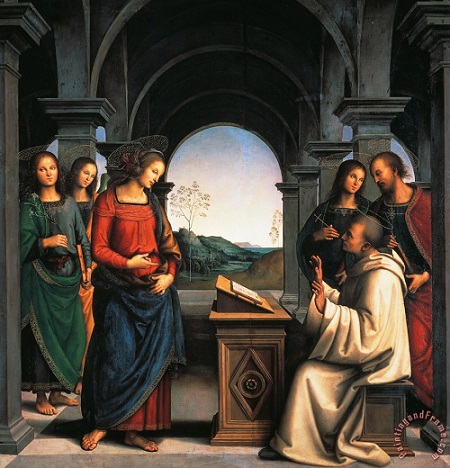
(Perugino, The vision of St. Bernard, c. 1490/91)
The history of Bernard of Clairvaux illustrates the power of a single wise man to bring about radical change in the fortunes of a city and an entire region.
It was the year 1134, and Bernard, soon to be declared a saint, has been sent by Pope Innocent II to Milan to settle a theological dispute and to bring Milan back on the path to Rome. The city was very welcoming to Bernard and every day he met with many citizens in the church of San Lorenzo. Many begged him to set up a monastery and finally he agreed, choosing a boggy patch of ground outside the city walls. This was to become the Cistercian monastery of Chiaravalle.
In the Legende Aurea, the medieval collection of legends of the saints by Jacobus de Voragine, there is an interesting anecdote about the founding of the monastery: “St. Bernard had built a monastery, and it was visited by such a plague of mosquitoes that the brothers suffered greatly. Then St. Bernard spoke and said, ‘I will place the church’s ban on them.’ The very next morning, they were all found dead.”
Despite the apparent Divine assistance in matters of combating insects. St. Bernard and his monks found that they had much other work to do. They carried out their religious duties, but they also saw it as their duty to assist the peasants in reclaiming land for the cultivation of crops, regulating water supply and drainage, and establishing large, meticulously organised farms that remain to this day the linchpin of agriculture on the Po plain.
The monks of the order helped to create accurately laid out terraced fields, kept under constant irrigation so that they produced vital fresh fodder for cattle-rearing even in the midst of winter frosts and ice.
A number of further benefits followed in the wake of the field improvements. The complete draining of parts of the marshes reduced the risk of malaria; the increased crop yields raised the living standards of the local population; and larger herds of cattle could be kept on the new meadows. Cattle farming in its turn brought new opportunities, such as the need for dairy workers to process butter and cheese. One new product was a medium fat cheese that had been heated, and had excellent keeping qualities. Later, it became known under the name grana padano. The range of food being produced in this tract of countryside was soon sufficient to prosper the nearby city of Milan as well.
So next time you visit Milan, pay a visit to the Abbey of Chiaravalle and this on this story of St. Bernard, the man who it is said changed the face of agriculture in the Po plain.
